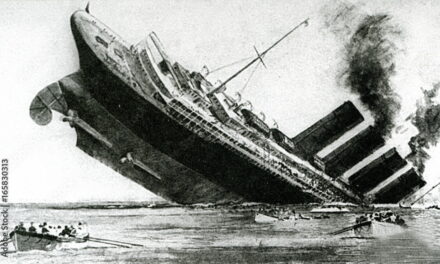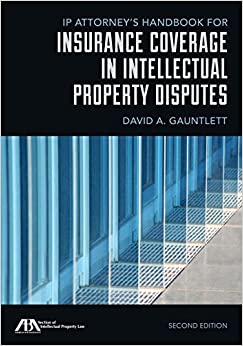All wars involve one side and/or the other looting the ground it covers good and sometimes great art. The Nazis were especially guilty of this during WWII: there was lots of it to steal (after all it was Europe); Hitler wanted a high-class museum in his home village; some senior officers of the German government and military had what they regarded as good taste, as least with respect art. And some men in the field may have realized that after their retreats were complete, they or their families, just in case, were going to need all the money they could lay their hands on. And besides lots of them said to themselves and sometimes to others, much of it belonged to Jews; Hitler had killed—or would kill–off most of them, or they had fled and were gone for good. Running often involves grabbing.
For many years some of the art has been returned when either discovered or re-categorized. Sometimes the courts make returns happen, sometimes not. Many of the exchanges were done on a one-to-one basis, but over time they are also sold through auction houses like Christie’s and Sotheby’s. That has been happening recently at both of these, and they are having different attitudes
toward the loot versus ownership problem. Patricia Cohen & Graham Bowley, Dispute Over Nazi Victim’s Art, NEW YORK
TIMES C1 (October 25, 2014).
I wonder now about two things. What role might insurance play in these situations? And what dangers might be there for lawyers?
Insurance
Of course, whenever and where ever there are “heavy-hitting” works of art and the person who “has” has any money, the works will be covered by property insurance. To a considerable extent, the special first-party policy coverage designed for fine art is pretty
much what one would expect. Liability policies may be a little different.
For one thing, most liability policies leave it open who may be a victim of the insured who might be entitled to compensation under the policy. This would not necessarily be the case under a fine art insurance policy providing coverage for a sale that is illegal
under the obscure and not-well-understood property law related to looting and “returning,” or—better–handing over.”
Under one policy, the seller of a piece would be the insured and probably the purchaser would be the only person who could qualify compensable. Maybe the auction house could be an additional insured. I guess the principal insured action would be a
failure to return when it was required. One of the buyer’s damages would be his legal fees to obtain recovery. Another was the amount he had to pay to obtain the work of art, assuming he really wanted. Or it might be the amount of the return
to the seller that the buyer could have obtained if he could have been the seller.
The auction house might need liability coverage. This might happen, for example, if Christie, say, didn’t do the kind of
work it should have done to investigate true ownership of the work. Of course, the seller and the auction house could be insured under the same policy. In fact, I would expect this to be true and that the house would require it and get a certificate of insurance before it would be willing to so much as take possession of it.
Of course, the house will also require that be liability coverage for its liability to the seller if it were to cause damage to the work. Naturally, it cannot be the same policy as the one just mentioned, where both the seller and the house are insureds, but the house could specify or simply obtain a particular type of policy while insisting that the seller pays for it.
–MSQ
The buyer might want liability coverage aiming at its possible liabilities involving injuries done to the seller and/or to the auction house. This could be something so simple as a physical loss it caused before it actually bought the policy. Or it might occur if the buyer breached its contract to buy without the kind of justifications found in the policy.
Another type of liability policy the seller might want is coverage for his selling the policy to someone when it was not what he said it was. For example, it might not be a painting by X but a forgery done by Y. (For those of you who are interested in this sort of thing,
there is substantial literature on the subject.) Obviously, the seller’s coverage should extend only to his buyer and to no one else, unless that buyer’s lenders or co-investors were included in the policy type being here
discussed.
One interesting set of questions about these situations pertains to underwriting and the pricing of such policies. Works of art are now selling for huge sums—many millions of dollars. But mistakes of the type here sketched are rare. Obviously, there would have to be detailed appraisals done in advance by my top-flight professionals, and they would have to be insured. So
how could the peril be priced? Normal actuarial methods could not be applied. Not even all the gods know how to do
it.
Legal Malpractice
There is a handful of lawyers that are involved in these types of transactions all the time. Many of them are litigation-oriented. Some represent the old-time owners or their beneficiaries, e.g., their grandchildren. Some represent the person or organization in
possession of the picture, say, at the point found. Often they represent the museum to whom it has been given or who bought it. And a few represent the gallery that is marketing and then auctioning it.
These lawyers can be guilty of malpractice in a variety of ways. If the lawyer possesses a picture and then sells it for himself or simply makes off with it, he will be guilty of a breach of fiduciary duty. This can count as a type of malpractice.
Usually, lawyer malpractice involves negligence in performance or omission. This can happen in a variety of ways. The most problem is one of proof. Usually, professional negligence is determined by comparing and contrasting the conduct of the accused lawyers with other reasonable, reasonably prudent, and knowledgeable practitioners who are adjudged, reliable experts. That is no simple problem in the situation under discussion here because there aren’t very many of them, so if two of them disagree, it is not clear that reliability can be established since there are so few experienced lawyers in the population
that’s relevant.
For me, the most interesting problem regarding this kind of malpractice is what faces the lawyer who provides formal opinions as to who owns what and how much they own if there are any fractions. This is an easy place in which to make a mistake. Of course, this is a standard problem in transfers of property. It is true even for an old property that has changed hands a number of times. And it is true that property may be controlled by the laws of different jurisdictions. It is not, however, so easily true when one or several persons have had possession of the object for perhaps more than a generation, even if no one has sold it to anyone. Nor are any of these problems simplified or made more reliable by the fact that looting is the original possession.
(A friend of mine is thinking about writing a novel in which the Germans loot it from a French museum, a Portuguese woman steals it from the German officer, the grandson of the Jew whose painting it was running off with it, gives it to his sister and dies, while
the sister is arranging for its sale. How many separate players might there be in this suit? How would limitations period, whether statutory, equitable, or procedural work? How many times would they have to be applied? And what if at least four different
countries are legitimately involved? He thinks he wants the Portuguese woman murder the selling sister, but I have told my friend that the murder is antifeminist, a proposition both she and her brother—who is also her cousin–reject.)
Things can get even more complicated when the attorney is rendering an opinion on a piece of the relevant type of property for an insurer or a prospective insurer. Of course, insurers seldom very seldom sue their own lawyers. Nevertheless, such a lawyer should obtain a very substantial applicable malpractice policy of the right sort might wish to make sure that there is excess coverage, and might even consider obtaining at least some of his coverage from the insurance company that is his client.






Recent Comments